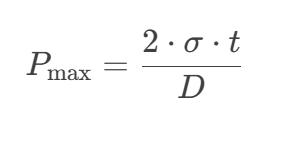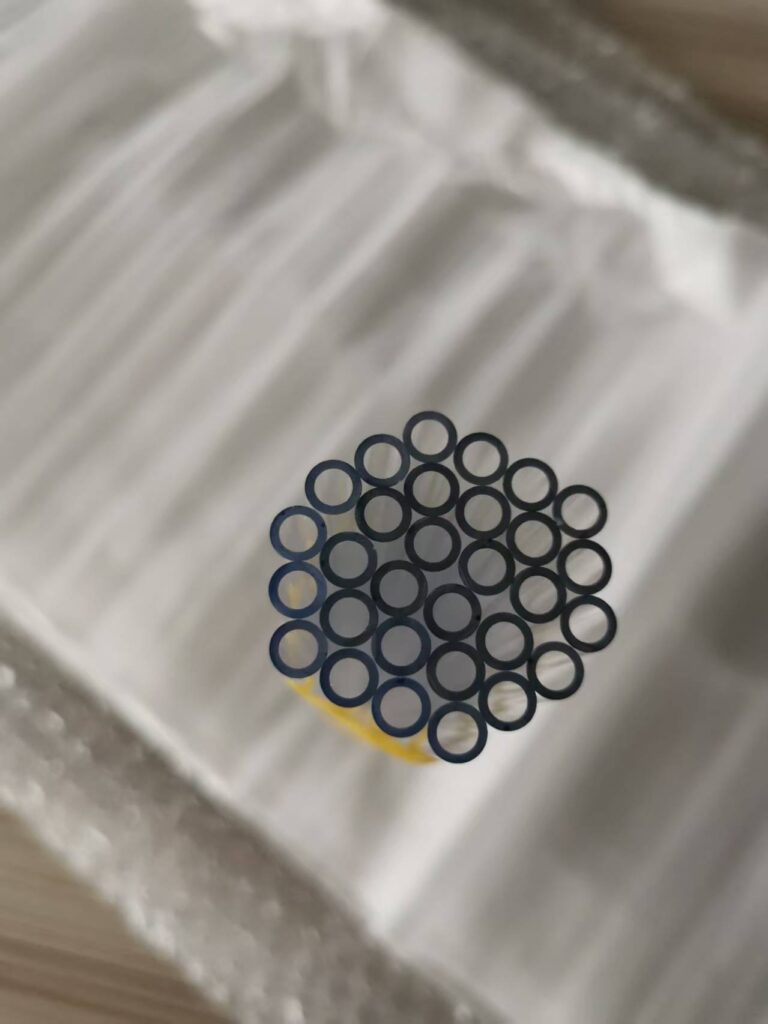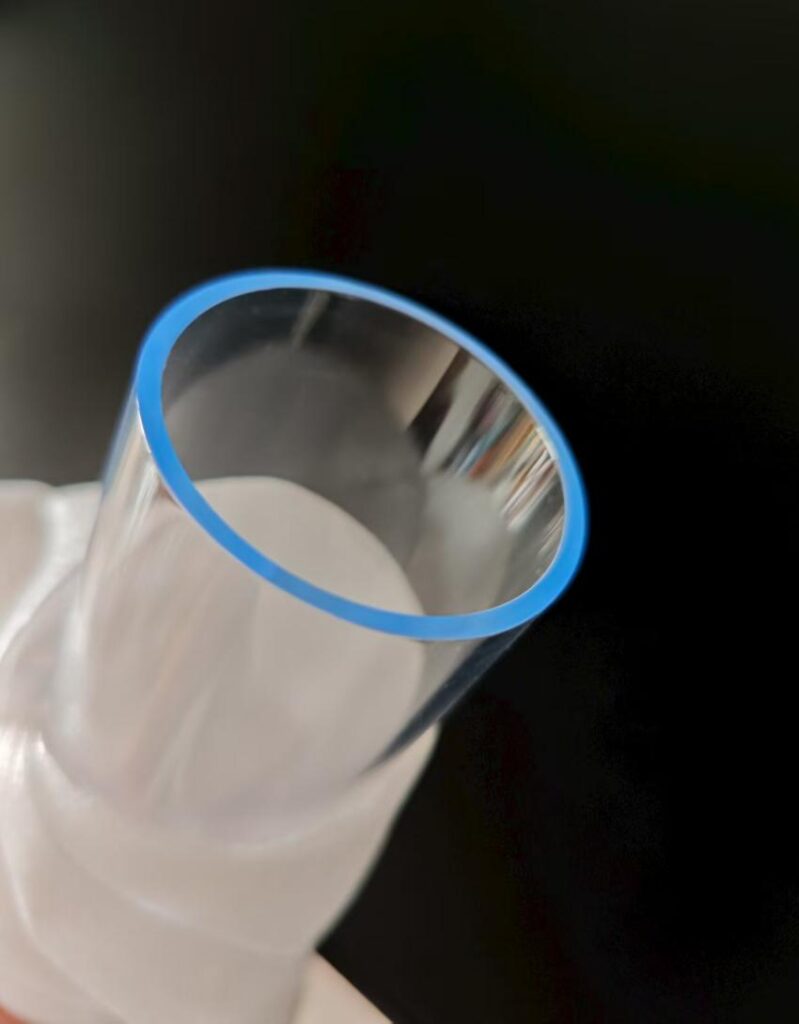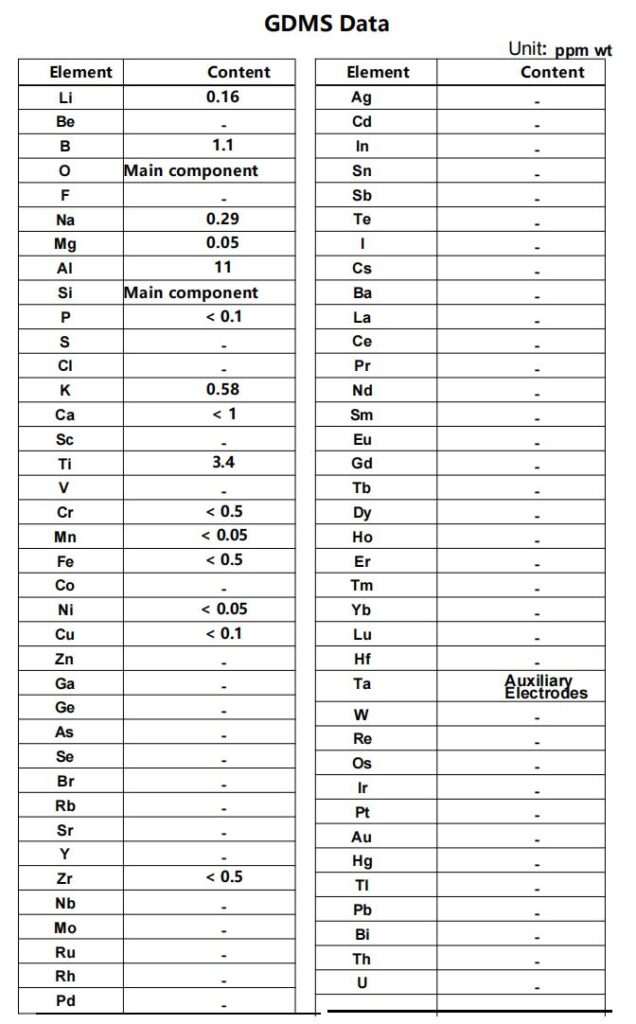1. Core Relationship (Thin-Wall Theory Formula)
The maximum allowable internal pressure (Pmax) of a quartz tube is inversely proportional to its inner diameter (D).

Τύπος:
- Pmax = Maximum internal pressure (MPa)
- σ = Tensile strength of quartz (~50 MPa, decreases at high temperatures)
- t = Wall thickness (mm)
- D = Inner diameter (mm)
Key Conclusion: Pressure resistance is inversely proportional to the inner diameter.
- Smaller inner diameter → higher pressure resistance (at the same wall thickness).
- Larger inner diameter → significantly reduced pressure resistance.

2. Pressure Resistance Comparison for Different Inner Diameters (Fixed Wall Thickness = 2 mm)
| Inner Diameter D (mm) | Theoretical Pressure (MPa) | Practical Safe Pressure (MPa) |
|---|---|---|
| 5 | 40 | 8–12 |
| 10 | 20 | 4–6 |
| 20 | 10 | 2–3 |
| 50 | 4 | 0.8–1.2 |
Note: In real applications, a safety factor of 3–5 is required. Therefore, the rated working pressure is always lower than the theoretical value.
3. Combined Influence of Diameter and Wall Thickness
- Small Diameter Tubes (D < 10 mm):
- Advantage: Naturally high pressure resistance, suitable for high-pressure experiments (e.g., microreactors, capillary fluid systems).
- Example: ID 5 mm, wall thickness 2 mm → working pressure 8–12 MPa.
- Large Diameter Tubes (D > 20 mm):
- Disadvantage: Rapid decline in pressure resistance, requiring much greater wall thickness.
- Example: ID 50 mm, wall thickness 5 mm → only ~2 MPa.
- To withstand 10 MPa, wall thickness ≥25 mm would be needed (impractical; recommend alumina or sapphire tubes instead).
4. Application Case: ID 7.75 mm, 10 MPa Requirement
- Theoretical minimum wall thickness: 0.775 mm.
- Practical requirement with safety factor: ≥3 mm.
- Outer diameter: 7.75 mm + 2 × 3 mm = 13.75 mm.
Conclusion:
- At ID 7.75 mm with 3 mm wall thickness, 10 MPa pressure is achievable.
- If ID increases to 15 mm with the same wall thickness, the pressure resistance drops to ~5 MPa.
5. Engineering Recommendations for Diameter Selection
- High-Pressure Applications:
- Use small inner diameters (5–10 mm) to minimize wall thickness requirements.
- Large Flow Applications:
- If large diameters (>20 mm) are required, switch to alumina or sapphire tubes.
- Vacuum Applications:
- Large diameters are more prone to buckling and require increased wall thickness or external support.
6. Extreme Case Comparisons
| Inner Diameter D | Wall Thickness t | Theoretical Pressure | Practical Limitation |
|---|---|---|---|
| 1 mm | 1 mm | 100 MPa | Microfluidics feasible, but machining difficult |
| 10 mm | 1 mm | 10 MPa | Safe limit only 2–3 MPa |
| 100 mm | 10 mm | 1 MPa | Only for low-pressure/static use |
7. Final Conclusion
- Diameter is the key variable: halving the inner diameter doubles the pressure resistance (at constant wall thickness).
- For ID 7.75 mm, wall thickness 3 mm is a practical balance, ensuring safe operation at 10 MPa.
- Large diameters (>20 mm) make high pressure impractical, so alumina or sapphire tubes should be considered.
- For optimization, consider wall thickness, material purity, and end-sealing methods together.




